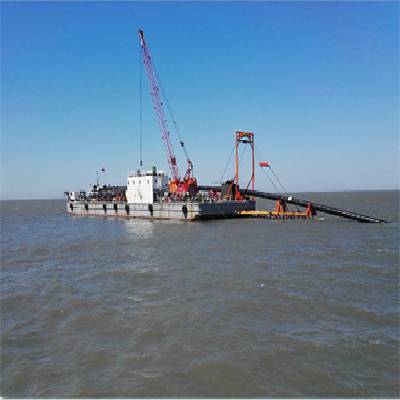The China Submarine Pipeline Installation is completed by a submarine
pipeline. The design considerations of the Offshore Pipe Installation Company are numerous, and the installation construction is to overcome all
risks. The first is that the operating environment is in the ocean. Not only is
the operating space severely restricted, but the complex and changing sea
conditions will also bring great challenges to normal construction. In addition,
the seabed environment is complex, not just a flat river. It is composed of
various topography and landforms, such as high seamounts, rolling hills, long
ridges, and deep trenches. We can't transform the seabed geomorphology like
laying pipelines on land, so no matter the design or construction process, the
consideration of laying submarine pipelines is very complicated. The problems of
low temperature, high pressure, high salinity, undercurrent surge, hydrate
blockage, pipeline corrosion, and impact loss will continue to exist. The
coexistence of these problems makes the laying of subsea oil and gas pipelines
not only an engineering problem, but also a scientific problem.
So, how is the submarine pipeline laid? For the Submarine Pipe Installation Service, water depth is the biggest influencing factor. According to the
different water depths, pipe laying operations are very different.

Submarine Pipe Installation Service
(1) In places close to the shore and in shallow water, the winch can be used
to directly pull the sea pipe to the land.
(2) Pipes can be laid in the shallow sea area and far away from the shore by
way of laying down and welding at the same time. S-Lay (S-type laying method) is
mainly used: the submarine pipeline enters the water through the stern holding
frame, forming an S-shaped curve and laying into the seabed. During the pipe
laying operation, there are 3 artifacts on the ship-tensioner, stinger and
welding line. The tensioner is used to fix the sea pipe, like a big clip to hold
the sea pipe. The custody rack is used to control the laying direction of the
sea pipe. In addition, due to the limited space for offshore operations, laying
a submarine pipeline requires a professional fleet to cooperate with each other
to complete the construction, and the cost is 1 to 2 times higher than the land
under the same circumstances.
(3) Pipe laying operations in deep water areas increase the water depth,
resulting in an exponential increase in construction difficulty. The increase in
the length of the submarine pipe leads to an increase in weight, which requires
the pipelaying vessel to withstand greater tension. At this time, the J-Lay
method is used for construction. J-Lay (J-type laying method): The submarine
pipe leaves the pipelaying vessel in a near-vertical form and descends along the
vertical bend until it is laid into the seabed. The overall pipeline is "J"
shaped, suitable for hundreds of meters to thousands Meters in the deep sea
area.
(4) With the continuous development of new technologies, the form of offshore
pipe laying operations has been continuously improved. For submarine pipes with
small diameters and slightly weaker strength, they can be manufactured on land
and directly wound on drums, and transported to sea by pipelaying ships. This
operation method is called Reel-Lay (rolled pipe laying operation) . At present,
the coiled pipe laying ship can be divided into two types of horizontal and
vertical. For horizontal coiled pipe laying ship, the axis of rotation is
perpendicular to the deck of the pipe laying ship, and the S-shaped laying
(commonly used in shallow water) is commonly used for laying umbilical cables;
for vertical coiled pipe laying ship, the axis of rotation is the same as the
pipe laying vessel The deck is kept level and is laid in a J-shape, which is
often used in deep water. Of course, which operation method to choose in the end
is not only to consider the water depth, but also to combine the comprehensive
factors such as operation cycle and operation cost.
Note: If you found anything violating your copyright, please contact us, we would remove them as soon as possible.




